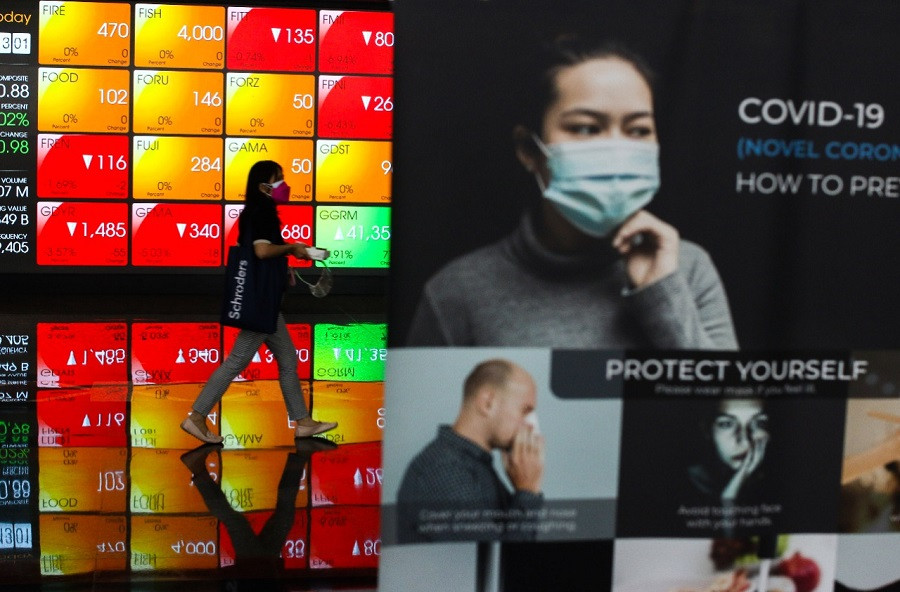Popular Reads
Top Results
Can't find what you're looking for?
View all search resultsPopular Reads
Top Results
Can't find what you're looking for?
View all search resultsHigh yet worrisome growth
If we assess the growth rate on a quarter to quarter (qtq) basis, the second-quarter growth rate was still far from a recovery to the prepandemic average quarterly growth of 5 percent.
Change text size
Gift Premium Articles
to Anyone
S
tatistics Indonesia (BPS) reported last week that Indonesia's economy had grown in terms of gross domestic product by 7.07 percent year-on-year (you) in the second quarter. The agency even praised the figure as the highest quarterly growth seen since the fourth quarter of 2004, when it reached 7.16 percent.
Economic ministers, however, should not let this go to their heads, as we still need to overcome the uphill challenge of getting the pandemic under control — especially with the recent surge in infections dampening growth prospects in the third quarter.
First of all, the yoy second-quarter growth looked unusually high partly because of the low-base effect and because it is being compared to the same period in 2020, which saw an economic contraction of 5.30 percent, the first minus growth since 1998. The first few cases of COVID-19 were discovered in early March last year.
But if we assess the growth rate on a quarter to quarter (qtq) basis, the second-quarter growth rate was still far from a recovery to the prepandemic average quarterly growth of 5 percent.
Yet more discouraging is that household spending, which usually contributes to over 55 percent of GDP, increased by only 1.27 percent. This is especially worrisome because the month-long Ramadan and Idul Fitri period, which usually records the highest growth of private spending in a year, took place in the second quarter.
Our second concern is the slowdown in investments, usually the second-biggest growth driver. Even though investments expanded by 7.55 percent on a yoy basis, they contracted by 2.7 percent qtq. This also is a worrisome trend because social mobility restrictions in the second quarter were not much different from the first quarter.
Hence, the blunt truth is that both consumer and business confidence was weaker in the second quarter.
It is encouraging to note, however, that on a qtq basis, government spending increased sharply by over 29 percent, compared to a contraction of 43.6 percent in the first quarter. We are, nevertheless, not worried that the spending spree would increase the fiscal deficit this year because Finance Minister Sri Mulyani Indrawati reassured early this month that even though the ongoing second wave of COVID-19 would increase the costs of health care and social assistance by almost 40 percent, the government would uphold its budget deficit target of 5.5 percent this year. The bigger costs would be met by realigning budget appropriations from other sectors.
Given the bearish trend in the second quarter, the second massive surge of COVID-19 infections in July and the consequently much stricter social mobility restrictions from early July to mid-August, we foresee lower qtq economic growth in the third quarter.
The slower-than-expected vaccination progress may require new mobility restrictions, especially after the increasingly high rate of infection outside Java. This would likely cause a more volatile and deferred growth recovery process.
In fact, most economists have revised down their economic growth outlook to between 3.5 and 4 percent throughout this year from an earlier projection of 5 to 6 percent.










